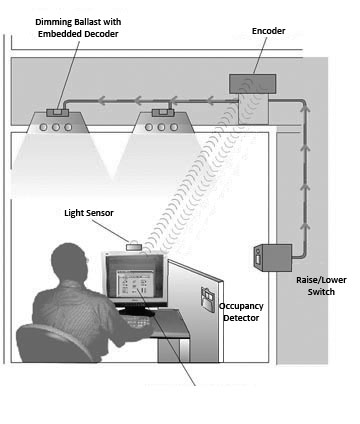Practical Application Automatic
Menu
Practical Application
- Talk with facilities staff to determine what types of lighting controls are already present in the building. Ensure that existing sensors are programmed and functional.
- Update timer control schedules to match the official hours of building operation. To save more energy, set timers to turn lights off, and allow occupants to turn lights on manually.
- Walk through the building(s) and site to determine which areas are best suited for automatic lighting controls.
- Determine which type of control is most appropriate for each identified space.
- Ensure that the RSO has approved proposed lighting modifications and is satisfied with the desired control for security.
- Consult facilities staff to determine whether the new controls can be selected and installed by post staff, or whether an engineer is needed to integrate new controls into the existing lighting control systems.
- Determine if a permit is required for design, design review, funding, permitting, management, installation, or Cx.
- Educate occupants about automated lighting controls operation to discourage manual override or disabling of controls that are unpredictable or unsatisfactory.
Figure 4: Sample lighting control components


